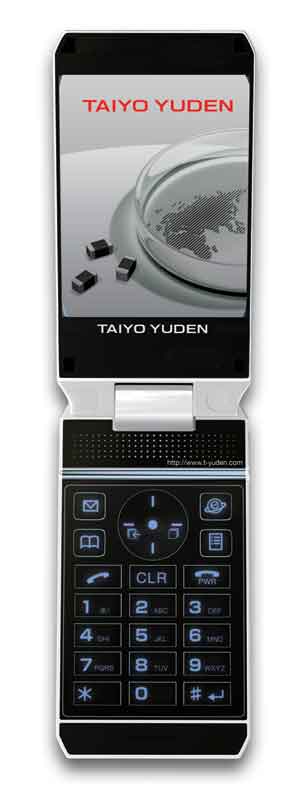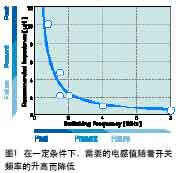Today, mobile phones are an integral part of people's daily lives. The global mobile phone market is showing a trend of polarization: high-end, multi-function phones and low-cost, single-function phones. In the European and American markets, consumers usually want to have high-end mobile phones with e-mail, GPS, photography, television, Internet, games, music, video downloads and other functions. Consumers like South Asia, India and Brazil are hoping for cheaper standard-function phones. Capacitors, inductors and other components as well as modular mobile phone solutions need to start from these two market needs in order to meet the needs of different consumers.
This article refers to the address: http://

RF circuit requirements In the mobile phone, the RF module controls the core communication function. As the function of the mobile phone increases, the size of the RF module becomes smaller and smaller, so as to leave room for other components, for example, power supply. Required baseband circuits, etc.
As a result, RF circuits require smaller components, modular circuits, and miniaturized modules to meet space-constrained requirements as much as possible. Therefore, the components used in the RF circuit must be as small as possible while maintaining the high frequency function.
In addition to conventional high-frequency circuits, high-end mobile phones now generally have other functions such as Bluetooth, GPS, and TV tuning. With the increase in antennas and related applications, the use of high-Q inductors in these high-end mobile phones is also increasing.
Designers use multilayer chip inductors with high Q values ​​for impedance matching or other systems. This multi-layer chip inductor plays a vital role in designing RF modules, future functional upgrades, and shrinking handsets.
Smaller Power Inductors In some popular consumer electronics, small power inductors are often seen, such as mobile phones, digital cameras, hard drives, portable audio players, and ODDs for notebook computers. In these volume-constrained devices, weight and continuous working time are two key factors to consider.
Each product upgrade will bring more features, which will increase the number of circuit modules, DC/DC converters, and high-performance inductors. However, the size of electronic products itself is getting smaller and smaller, so it is imperative to use smaller components. In mobile phones, a four- or five-channel converter uses either a wire wound inductor or a multilayer inductor. They are small and have high frequency characteristics.
Micro-power inductors are like mobile phones. Nowadays, the development trend of power supplies in handheld devices is getting smaller and more efficient. In order to achieve this, it is necessary to reduce the volume of the inductor and reduce the number of components. One solution is to increase the switching frequency of the switching power supply. This will reduce the inductance value, reduce the inductor volume, and increase the transient response due to load changes.
In the past, the 500kHz switching frequency required an inductance range of 4.7 to 10μH. But now, the switching frequency has been increased to 1 ~ 6MHz, the inductance value dropped to 1μH, as shown in Figure 1.

There are advantages and disadvantages to increasing the switching frequency. As the switching frequency increases, the loss of the switching device also increases, and the efficiency decreases. Therefore, the switching frequency cannot be increased without considering the development of circuits and other devices.
When the switching frequency is 300 kHz, the required inductance size is 4.0 mm × 4.0 mm × 1.8 mm; when the switching frequency is increased to 1.5 MHz, a smaller inductance is required, and the size is 3.0 mm × 3.0 mm × 1.0 mm. In order to meet the small size design. The switching frequency is further increased and the inductance value is correspondingly reduced, allowing the use of a smaller inductor.
The thickness of the inductor is also constantly thinning. Just a few years ago, the thickness of most cell phone inductors was 2.0mm, and now the inductor thickness has dropped to 1.0mm. Even so, designers still need thinner, more efficient inductors due to size, design considerations, and performance considerations.
The reason why volume-optimized inductors use wire-wound inductors in space-constrained designs is that they have a sleeveless and coreless structure consisting of only one drum core, made with a special ferrite powder coating technique. .
The inductance of this structure has no air between the drum core and the sleeve core, thereby making the inductor resistant to eddy currents and reducing the impedance to alternating current. Moreover, due to the resin coating technology, the inductance of this structure is very strong and can lead to higher power efficiency, which is very important for small handheld devices. Another volume-optimized wire-wound inductor design is to reduce all possible wasted space on the structure. As a result, the inductor surface area can be reduced by 50% compared to conventional inductors, and the DC impedance is greatly reduced while still maintaining Higher rated current and low Rdc.
Future trends Looking to the future, demand from mobile phones, including smartphones, will continue to grow. Low-cost handset design for developing countries such as India and Brazil will be a huge market growth point.
Diving Uv Light,Photography Diving Light,Videography Diving Uv Light
Hi-Max Technology Co., Ltd. , http://www.gdflashlight.com